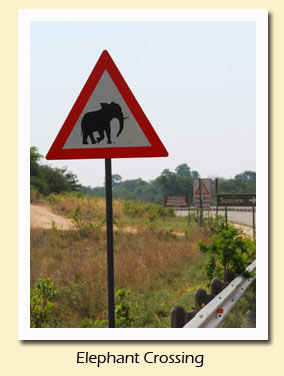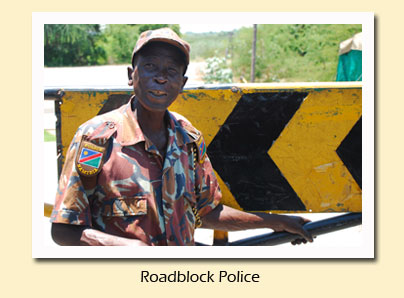

Getting to Namibia
On our way out of Livingstone, Judith had to find the local clinic and get a nurse to give her her third shot in a series of rabies shots for her monkey bite. She'd brought the vaccine with her in an ice chest and left it in the lodge restaurant refrigerator for the weekend. There was one small clinic in Livingstone. And fortunately, there were only a few people in line before us. The waiting area was sparsely decorated with crucifixes and psalm art, reined over by a stern-looking nurse in a white uniform and cap. The doctor and nurses couldn't have been more helpful, though, and the whole thing only cost $5.
We were soon on our way into the Caprivi Strip in Namibia. To cross the border, we had to go into one building and wait to get our passports stamped, then drive to a whole other place to go through immigration, which involved long lines in a stuffy room that reeked of B.O. It wasn't until after we had crossed the border that we realized the drive would be more like seven hours than the expected four. A demoralizing moment, but everyone rallied.

Roads in Namibia are actually quite good, compared to Zambia. There are even shaded rest stops along the way. But towns and facilities are far apart with nothing but elephant crossings in between. Carcasses of wrecked and stripped cars along way served as reminders to check the gas gauge.
By the time we got to Divundu, the village near Ngepi Lodge, we were quite worn out. The lodge itself was several miles off the main road, on sand tracks that were barely negotiable with four-wheel drive. For Mike on the motorcycle, it was nearly impossible to navigate. Within the first mile, he went down three times, each time struggling to get the 650 pound bike upright again. When we reached the lodge, he was coughing and wheezing, his lungs full of dust, and the bike was a bit worse for wear. It was all worth it, however, when we stepped into our "treehouse" and saw the view.
